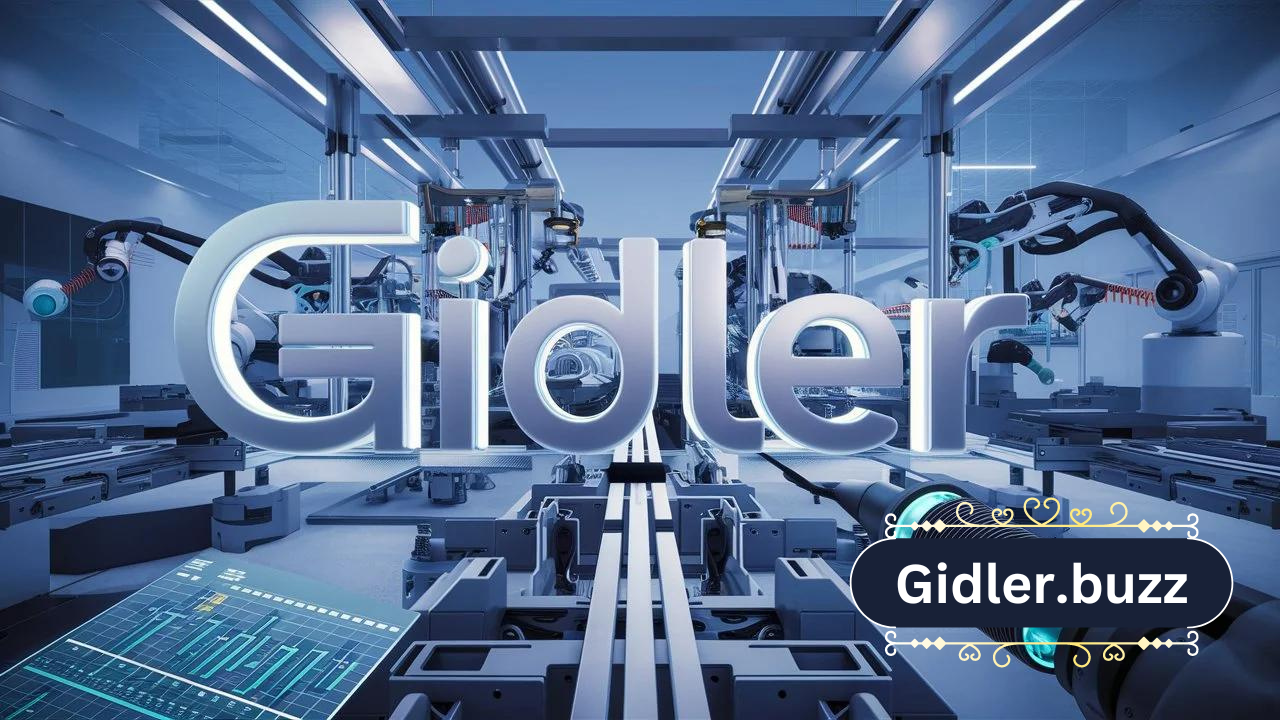In the rapidly evolving world of business and technology, Gidler has emerged as a significant player, capturing attention with its innovative approach and strategic vision. This article provides an in-depth exploration of Gidler’s business model, its impact on the industry, and its future prospects. From its origins and core offerings to its challenges and strategic goals, we will examine what sets Gidler apart and how it is shaping the future of its sector.
1. The Genesis of Gidler
1.1 Founding and Early Development
Gidler was founded in [Year] by [Founder(s)] with the vision of addressing [specific market need or problem]. The initial focus was on [initial product or service], which aimed to [briefly describe purpose or function]. The founding team brought together expertise in [relevant fields such as technology, business, finance, etc.], which laid the foundation for the company’s growth and innovation.
Key milestones in the early development of Gidler include:
- Conceptualization: Identifying a unique opportunity in the market and developing a business plan to address it.
- Funding: Securing initial funding through [investors, venture capital, or other sources] to support the development and launch of the platform.
- Launch: Officially launching Gidler’s first product or service and beginning operations in [Year].
1.2 Vision and Mission
Gidler’s vision is centered on [describe the long-term goal or aspiration, such as transforming an industry, improving user experiences, etc.]. The company’s mission statement reflects its commitment to [core values or objectives, such as innovation, customer satisfaction, or sustainability]. These guiding principles have shaped the company’s strategy and operations, driving its growth and success.
2. Core Offerings and Services
2.1 Product Portfolio
Gidler’s product portfolio includes a range of offerings designed to meet the needs of its target market. These products are characterized by [describe key features or innovations, such as cutting-edge technology, user-friendly design, etc.]. Some of the primary products or services offered by Gidler include:
- Product/Service 1: Description of the product or service, including its features, benefits, and target audience.
- Product/Service 2: Description of the product or service, highlighting its unique selling points and market positioning.
- Product/Service 3: Overview of additional products or services that contribute to Gidler’s overall portfolio.
2.2 Technological Innovations
Gidler is known for its technological innovations, which have set it apart from competitors. Key technological advancements include:
- Technology 1: Description of a specific technology or feature that enhances Gidler’s products or services.
- Technology 2: Explanation of another innovative technology or approach that contributes to the company’s success.
- Technology 3: Overview of additional technological innovations that demonstrate Gidler’s commitment to staying at the forefront of its industry.
2.3 Market Positioning
Gidler’s market positioning is defined by its [unique value proposition, competitive advantages, etc.]. The company differentiates itself through:
- Innovation: Emphasizing cutting-edge technology and innovative solutions that address market needs.
- Customer Experience: Focusing on providing exceptional user experiences and personalized services.
- Quality: Delivering high-quality products and services that meet or exceed industry standards.
3. Business Strategy and Operations
3.1 Strategic Goals
Gidler’s strategic goals are aimed at driving growth and achieving long-term success. Key goals include:
- Expansion: Exploring opportunities for geographical or market expansion to reach new customers and markets.
- Innovation: Continuously investing in research and development to enhance products and services.
- Customer Satisfaction: Prioritizing customer feedback and satisfaction to improve offerings and build brand loyalty.
3.2 Operational Model
Gidler’s operational model is designed to support its strategic goals and ensure efficient operations. Key components of the operational model include:
- Supply Chain Management: Managing the supply chain to ensure timely delivery of products and services.
- Manufacturing and Production: Overseeing manufacturing processes to maintain quality and efficiency.
- Customer Support: Providing robust customer support to address inquiries, issues, and feedback.
3.3 Marketing and Sales
Gidler’s marketing and sales strategies are integral to its success. Key strategies include:
- Digital Marketing: Utilizing online channels, such as social media, search engine optimization (SEO), and content marketing, to reach target audiences.
- Sales Channels: Leveraging various sales channels, including e-commerce, direct sales, and partnerships, to drive revenue and growth.
- Brand Building: Investing in brand-building activities to establish a strong brand presence and reputation in the market.
4. Industry Impact and Market Influence
4.1 Industry Trends
Gidler has had a significant impact on industry trends by introducing innovative products and services. Key trends influenced by Gidler include:
- Trend 1: Description of an industry trend that Gidler has contributed to or influenced.
- Trend 2: Explanation of another trend that reflects the company’s impact on the industry.
- Trend 3: Overview of additional trends that demonstrate Gidler’s role in shaping the market.
4.2 Competitive Landscape
Gidler operates in a competitive landscape with several key players. The company’s competitive advantages include:
- Innovation: Leading the market with innovative solutions and technologies.
- Customer Experience: Providing exceptional customer service and support.
- Brand Reputation: Building a strong brand reputation through quality and reliability.
4.3 Economic Impact
Gidler’s growth and success contribute to the broader economy in several ways:
- Job Creation: Generating employment opportunities and contributing to economic development.
- Investment: Attracting investment and supporting business growth in the region.
- Market Influence: Shaping market dynamics and influencing industry standards.
5. Challenges and Opportunities
5.1 Challenges Faced
Gidler faces several challenges that impact its operations and growth:
- Technological Challenges: Addressing technical issues and staying ahead of technological advancements.
- Market Competition: Navigating a competitive market with numerous players and emerging competitors.
- Regulatory Compliance: Ensuring compliance with regulations and industry standards.
5.2 Opportunities for Growth
Despite the challenges, Gidler has several opportunities for growth:
- Emerging Markets: Expanding into emerging markets with high growth potential.
- Technological Advancements: Leveraging new technologies to enhance products and services.
- Strategic Partnerships: Forming partnerships and alliances to drive innovation and market expansion.
6. The Future of Gidler
6.1 Vision for the Future
Gidler’s vision for the future involves:
- Innovation: Continuing to innovate and lead in its industry.
- Sustainability: Embracing sustainable practices and contributing to environmental and social responsibility.
- Global Expansion: Exploring opportunities for global expansion and reaching new markets.
6.2 Strategic Initiatives
Key strategic initiatives for Gidler’s future include:
- Research and Development: Investing in R&D to drive innovation and enhance product offerings.
- Market Penetration: Implementing strategies to increase market share and customer base.
- Customer Engagement: Enhancing customer engagement and building long-term relationships.
6.3 Preparing for Challenges
To prepare for future challenges, Gidler is focusing on:
- Risk Management: Developing risk management strategies to address potential risks and uncertainties.
- Adaptability: Staying adaptable and responsive to changes in technology, market conditions, and customer needs.
- Continuous Improvement: Committing to continuous improvement and staying informed about industry trends and best practices.
Conclusion
Gidler represents a dynamic and innovative force in the business world, with a strong foundation and a vision for the future. Its commitment to technology, customer satisfaction, and market leadership has positioned it as a significant player in its industry. By addressing challenges, seizing opportunities, and staying true to its strategic goals, Gidler is well-positioned to continue its growth and success in the evolving digital landscape.
As Gidler moves forward, its impact on the industry and market will likely continue to shape the future of business and technology. Understanding the company’s journey, offerings, and strategies provides valuable insights into the broader trends and developments within the sector. Gidler’s story is one of innovation, resilience, and forward-thinking, reflecting the evolving nature of the business world and the potential for success in a competitive landscape.



